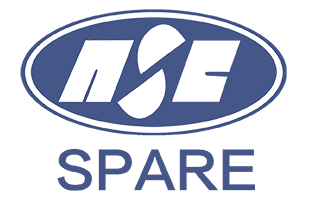With the advancement of industrial and environmental technologies, the demand for more efficient, economical, and reliable materials has been increasing. In water treatment and industrial applications, FRP (Fiberglass Reinforced Plastic) scrapers have emerged as an ideal alternative to traditional metal scrapers due to their unique physical and chemical properties.
Scrapers are auxiliary equipment in sedimentation tanks of sewage treatment, specifically designed to remove oils, colloids, and sludge from the bottom of industrial and urban wastewater. They are suitable for sedimentation tanks, settling tanks, and oil separation tanks in refineries, water plants, or sewage treatment plants, capable of operating 24 hours a day continuously or intermittently. Their primary function is to transport settled sludge to the sludge outlet of the tank and remove it. They should be used in conjunction with oil collectors and sludge valves to separate surface oil scum and bottom sludge, achieving initial purification. Non-metallic scrapers are equipped with two parallel enclosed traction chains. Equipped with multiple scrapers, they move in a four-sided track cycle along the guide wheels and rails in the sedimentation tank, driven by a drive device. By moving slowly in a cycle, they can scrape the floating oil scum from the water surface to the oil collector at the inlet and remove the sediment at the bottom of the tank to the sludge trough at the outlet through the sludge valve, thus completing the initial mechanical purification of wastewater.
FRP scrapers are composite materials made of fiberglass and resin, specifically used to remove sediment and sludge in water treatment facilities. These scrapers are designed to work in sedimentation tanks, clarifiers, and other similar facilities to ensure efficient and clean water treatment processes. FRP scrapers are sufficiently strong and rigid, evenly spaced, and feature a C-shaped design, making them lightweight, easy to maintain, and requiring no special internal cleaning measures to prevent sludge accumulation. Typically, one in every four scrapers is a squeegee (i.e., a rubber plate).
Most mainstream scrapers on the market are made of stainless steel and nylon materials. Compared to metallic materials, FRP has several advantages:
1. Corrosion Resistance: FRP materials have natural resistance to various chemicals, especially suitable for corrosive environments.
2. Lightweight and High Strength: FRP scrapers are lighter than traditional metal scrapers but offer similar or even higher strength, reducing the need for structural support.
3. Durability and Longevity: The wear resistance and anti-aging properties of FRP materials ensure stability and low maintenance costs over long-term use.
4. Customizability: FRP scrapers can be customized in size, shape, and installation configurations according to specific application needs, offering greater flexibility.
5. Environmental Impact: The production and use of FRP materials have a smaller environmental impact than metals, aligning with sustainability goals.
FRP scrapers demonstrate their unique advantages in modern water treatment and industrial applications, particularly in situations requiring corrosion-resistant, lightweight, and high-strength materials. Their customizability and eco-friendliness make them an ideal choice to replace traditional metal scrapers. With ongoing technological advancements, FRP scrapers are expected to find broader applications in various industrial sectors.

